The Platypus BAT
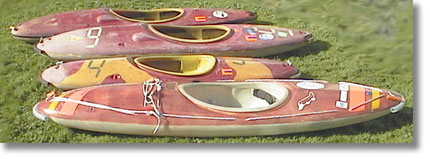
Top to bottom: Mark 1 (1972), Mark 2 (1976), Mark 3 (1978), Mark 4i (1982, 2001)
Length 250 cm, Beam 57 cm
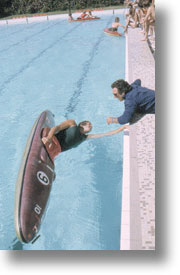
In 1972 I began work on a BAT (Baths Advanced Trainer) to meet the need for a boat that could be paddled by 10 year olds and adults. For the children it would be a kayak simply to paddle around and have fun with: for the adults it would be a serious training boat for rolling and other advanced skills.
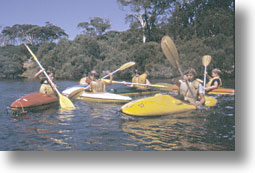
The first was launched on 24 May 1972, as far as I know the first BAT in Australia. A small batch was built for the YMCA to use at its Kangaroo Island camps (picture). Another batch was built a couple of years later for another youth group. It was also built in small numbers in NSW (as the PlatyBAT) and Tasmania. For several years it was the favoured boat for rolling classes and several people surfed them.
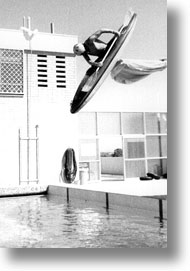
Yours truly launches from the 3m board at the Sturt pool: another photo appeared in The Advertiser the next day, described as ‘waterfall diving’.
Sculling for support in the Chapman River, Kangaroo Island. This is boat number 50, now up on the wall at Paddle SA
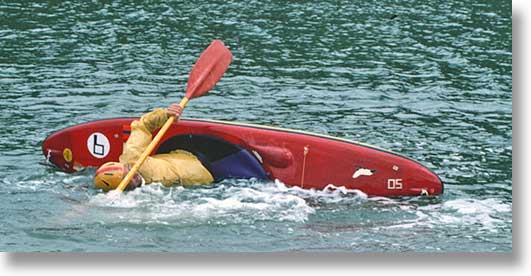
Mark 2
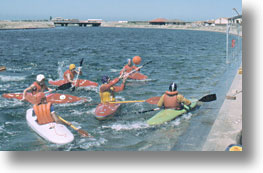
One problem with the first version was lack of buoyancy: heavier paddlers needed more volume. The Mark 2 was developed in 1976 with extra volume in the hull and stern sections. A fleet of this version equipped one team of the initial Canoe Polo series held in Adelaide: the red boats in this picture. (Boats for the other team were the UK Phighter, built under licence in Adelaide. (Also built locally was the Trylon BAT Mk 5: for a while three different BAT designs were on offer here.))

The first of these boats became the first kayak in Australia to be fitted with an integrated cockpit, based on the original cut into pieces and posted to me by its originator, Alan Byde. It demonstrated the worth of the cockpit, capable of being paddled swamped, but I did not make real use of the idea until I began work on Voyager. The pic shows the boat sliced lengthwise at the end of its useful life.
Mark 3
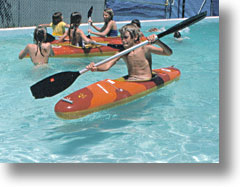
At about this time, 1978, I developed the Mark 3, a junior version for my primary school students. It is 205 cm long, 45 cm beam, probably a bit too small for its intended users. My students used them only in the school pool: elsewhere they used a localised version of the British P&H Junior. One of these boats was retro-fitted with a junior sized integrated cockpit.
Mark 4
Enthusiasm for Polo faded after a while, to be revived in the early 1980s. By then I had the Mark 4, with the volume of the Mark 2, but with the cockpit lowered, a bit of extra beam to fair things more smoothly, and a general tidying up, including the removal of the prominent knee bulges. However, by this time Polo boats had evolved into low volume craft with bow and stern that could be sunk to enhance manoeuvrability, so Platypus did not feature for long in the new Polo series.
The first rotomoulded boats, the Dancer® and its ilk, began to appear, and soon became the boats of choice for training both on open water and in pools, so only a few Mark 4 boats were built. The moulds languished in the rafters of my shed for many years and I paddled one only occasionally.
Mark 4i
When Canoe SA decided to participate in the 2001 Adelaide Boat Show I thought that sea kayak rescues would be worth demonstrating in the pool. However the pool was too small for sea boats, so a version of Platypus with the Voyager cockpit seemed the way to go. The only new moulds needed were for the cockpit rim (deeper than the existing) and the inserts for the access ports bow and stern.
I built four, all different colours, and using translucent pigments and clear gelcoat so that the internal structure and buoyancy were visible. They have 8 mm decklines, deck shock cords, and towing cleat. The foot pumps were borrowed from other boats.
The boats behaved as predicted, quite controllable with the cockpit flooded, and the jets from the pumps intrigued spectators. No pictures of the boats in a pool were taken until the 2004 Tackle, Tinnies and Dive Show, with L–R David Mallett, yours truly (single blade), and Ian Hume (pic by Margaret Stuart). The composite three-view shows their appearance. Between shows they were used for occasional pool and some initial surf training.
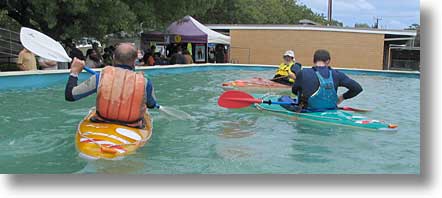
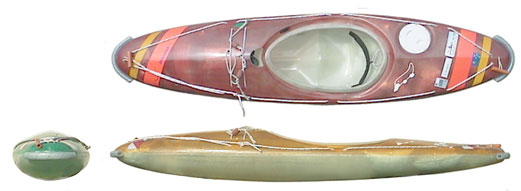
Mark 5
For many years I wanted to replace my Dancer with something that would behave like a sea boat, rescue wise. In early 2004 I decided that a stretched Platypus with integrated cockpit was the best solution. I used the prototype Mark 4 (1982) as foundation for the plug, with new bow and stern (taking the length to 3.2m), VCP-type hatch aft of the cockpit, cockpit hand rails, and a number of other changes.
The first boat, translucent red and yellow like many of its predecessors, was on the water in mid-September. Speed is increased by at least half a knot, so that it can easily keep pace with Dancers, Corsicas, and the like, and all other characteristics are as before: lively and sensitive, but without vices. Eventually I built four more, all in different colour schemes.

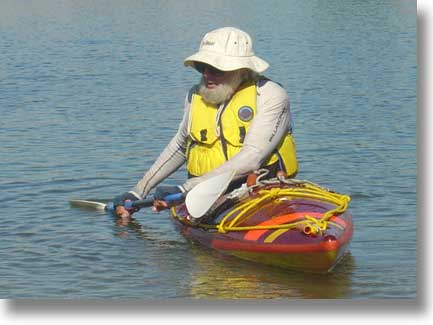
Instructor at work, setting up to demonstrate reverse sweep (Pic by Nicole Main)
Mark 6
There is a body of opinion that holds that we should be teaching kayak skills in South Australia in craft that better match kayaking in this state: sea kayaking and River Murray touring. In this view, whitewater boats are too awkward in the early stages, and something less responsive is needed. After thinking about it for some while, in 2010 I decided that the quickest solution was to use the existing deck and cockpit with a new hull, lofted some sketches into full size keel and section lines, and then a plug.
The result is Platypus 6, with the first boat first launched on 8 October, fully equipped as a sea boat with decklines, footpump and retractable fin. Very different handling, faster and tracking straight.

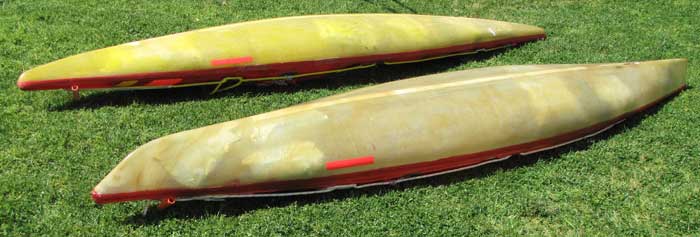
Platypus 6 hull (nearer camera) compared to its predecessor.
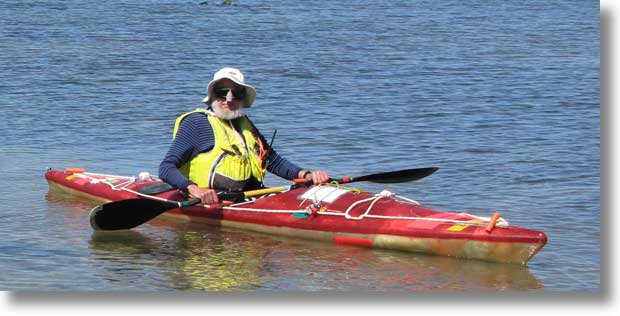
Posed, in Barker Inlet.
Keyhole cockpit
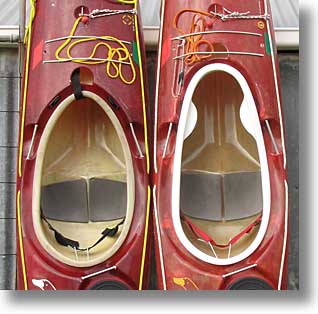
The Platypus cockpit was originally based on that of the KW-7, with the contours modified. In recent years keyhole cockpits have become popular, especially in whitewater where they are a safer option. At sea, spraydecks could be imploded by surf, but this is now less of a problem with modern spraydecks. For most people the advantage is that one does not need to perch precariously on the aft deck to enter or leave the cockpit.
A 2012 project has been to make new cockpit rims for several boats, together with a section of deck to fit. Here’s a comparison of new and old. What you can’t see is that the box under the deck must be the short version to keep room for feet. (The new is white because that’s the colour of some gelcoat I wanted to finish off.)
Platypus is not available commercially, and you’ll need to be very convincing to persuade me to build you one.
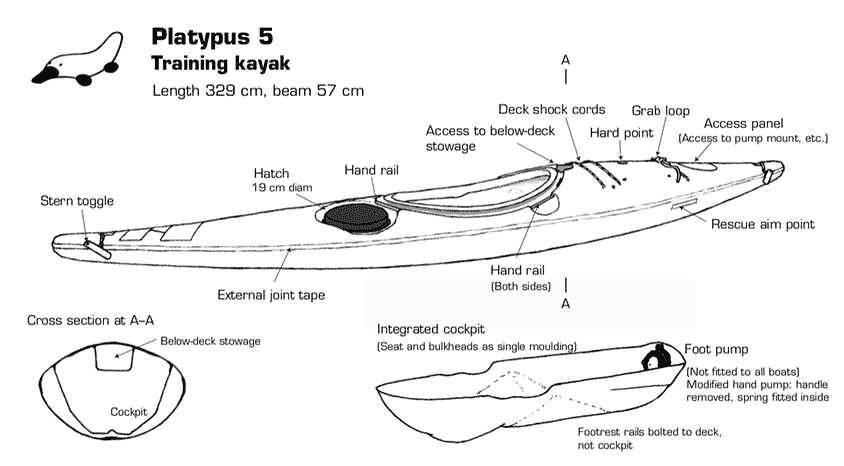
A cutaway view. The pump was not fitted to all boats. The ‘Rescue aim point’ is an orange strip used instead of the footrest bolts as a positioning aid for Eskimo Rescue practice